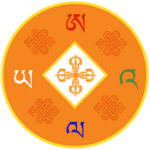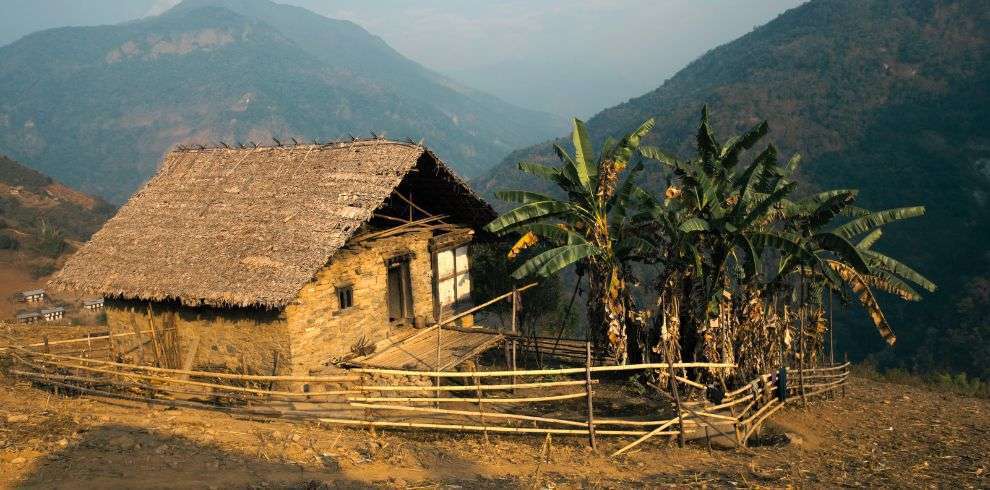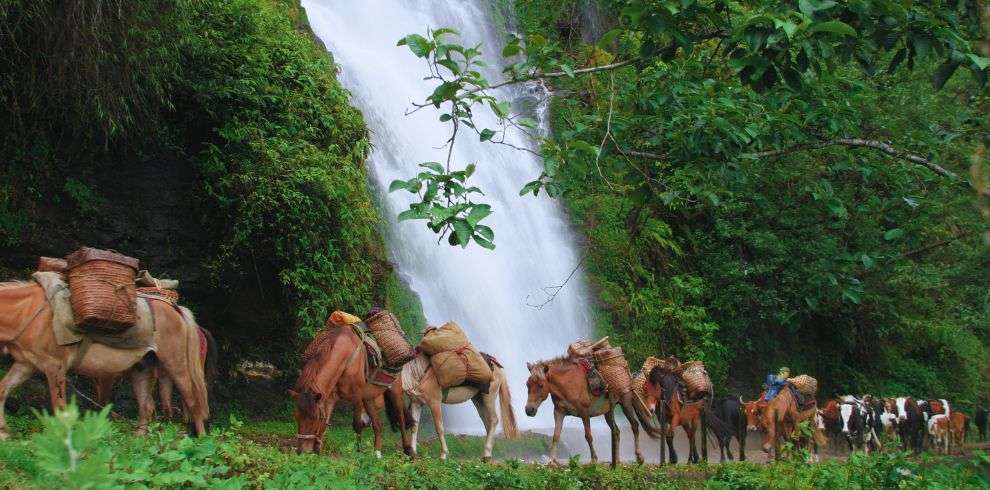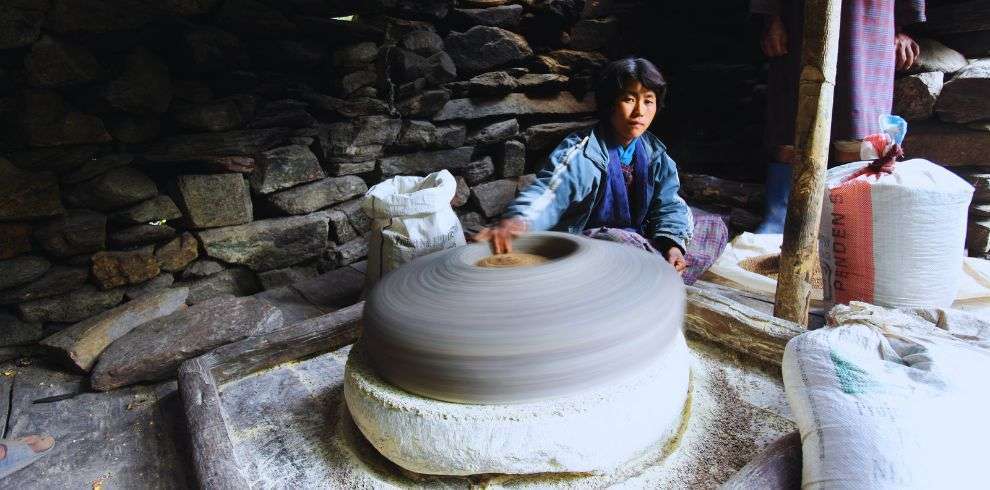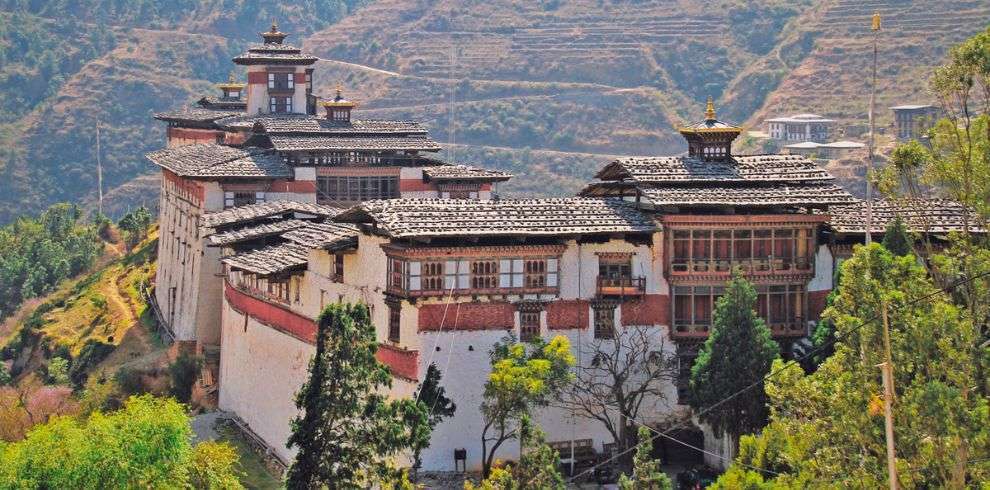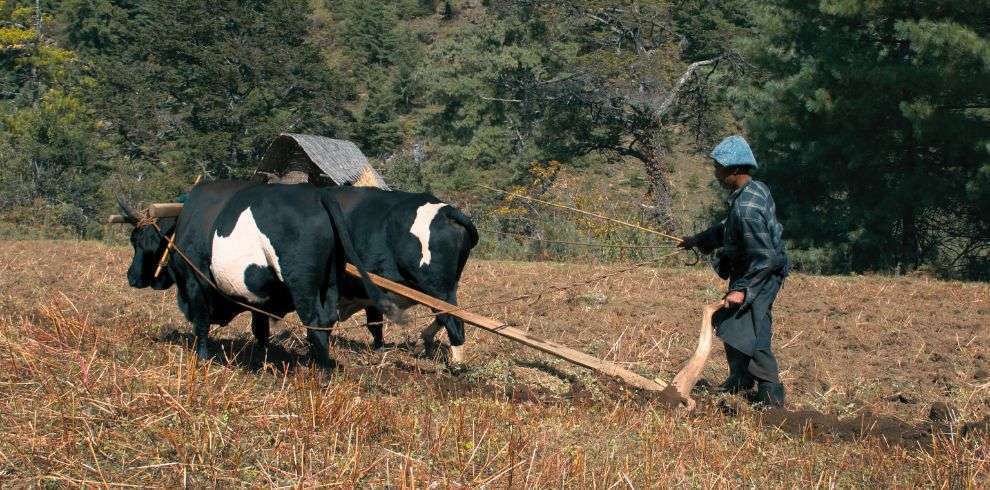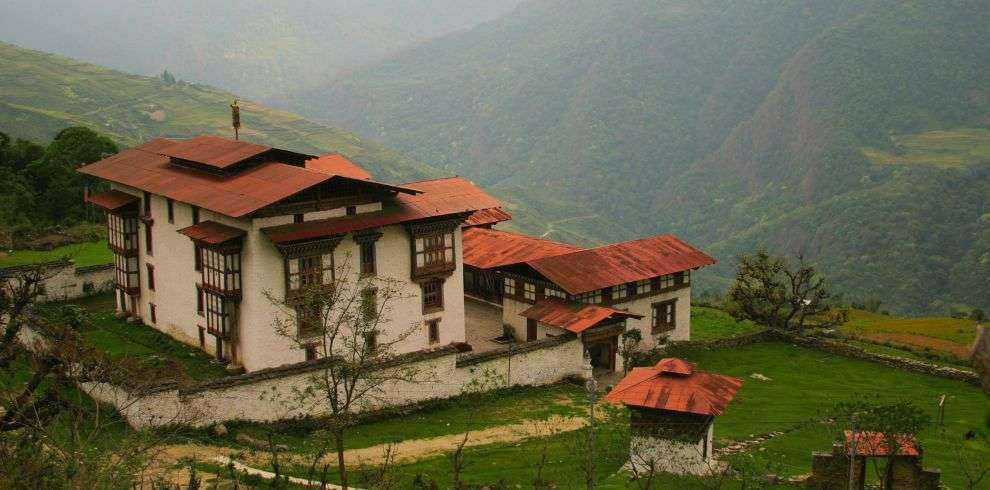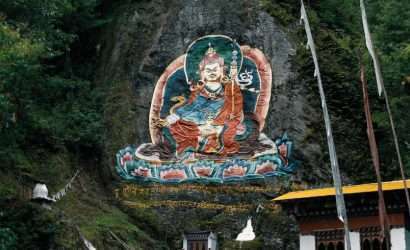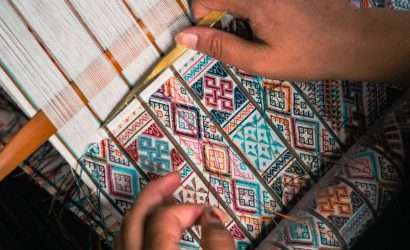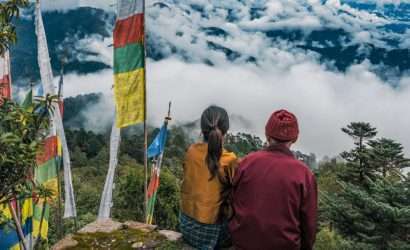One of the best parts of this trip would be, how easily and smoothly Bhutan and its people leave an impression on you without you knowing about it. And what you would need to enjoy your trip without any worries. There are various forms of tours ranging from cultural, adventurous, family, and there are nuptial ones as well nowadays. Through this path, you will be exploring the places where very limit people do this kind of tour.
Bhutan is truly mystic kingdom, with captivating mountains and marvels of nature and flora and fauna, this tour package will take you through a tour of beautiful towns of Punakha, Dagana, Tsirang, Sarpang, Gelephu, Zhemgang, Trongsa, Phobjikha, Thimphu and Paro. The journey itself is very interesting which you must book this tour. You will also spend time visiting remote villages, experience unique culture and tradition of Bhutan.
Overview
Bhutan is truly mystic kingdom, with captivating mountains and marvels of nature and flora and fauna, this tour package will take you through a tour of beautiful towns of Punakha, Dagana, Tsirang, Sarpang, Gelephu, Zhemgang, Trongsa, Phobjikha, Thimphu and Paro. The journey itself is very interesting which you must book this tour. You will also spend time visiting remote villages, experience unique culture and tradition of Bhutan.
Itinerary
Dochula pass: The pass is at a popular location as it offers a stunning 180-degree panoramic view of the Great Himalayan Mountain ranges. The view is especially scenic and very clear on winter days with snowcapped mountains forming a majestic backdrop to the tranquility of the 108 chortens gracing the mountain pass.
Lamperi Botanical Garden: The Park has many varieties of plants, herbs, birds and animals. If you visit between April and June, you can find about 38 out of Bhutan’s 46 species of rhododendrons and spot some of the 220 species birds. This Park is one of the must visit place for birds and nature lovers. You may enjoy the hot packed lunch here if you had planned picnic.
Punakha Dzong: Built in 1637 by Zhabdrung Ngawang Namgyal, the Dzong was named Druk Pungthang Dechen Phodrang (Palace of Great Happiness). Punakha is still the winter residence of Je-Khenpo religious head of Bhutan. King Jigme Dorji Wangchuck convened the first National Assembly here in 1952. This is one of the finest and must see Dzongs of Bhutan. The Dzong stands inbetween meeting point of two rivers, Phochu and Mochu making the most photogenic Dzongs of Bhutan.
Chimi Lhakhang, Temple of fertility: This temple is known as the temple of fertility. It is widely believed that childless couples can visit this temple to pray for better fertility to conceive the child. There are stories and incidences that many visitors dream came true however one must truly need to believe and follow the lama’s instruction. The hike though the lovely villages of Mesina gives truly amazing experience. Enjoy the gentle walks from the road head.
Punatsangchu Tunnel: You will also cross the only road tunnel in Bhutan.
Dagana: Dagana is a verdant region and over 80% of the district is under forest cover. Hardy trees like Champ, Augury, Chirpine and Sal grow throughout the region.
Lung Si Gang: Previously known as Hawa-Dangra is the popular hotspot for lunch and picnic for people plying from other districts. A white stupa is built on the windy hill surrounded by fluttering prayer flags. Just a meter from the stupa, you ll find local vendors selling fresh local produce.
Dagana Dzong: Located in Dagana, the Dagana Dzong is the headquarters for district administration and houses the clergy. The name ‘Dagana’ is derived from the words – Darkala and Darkarnang. The former refers to the province’s guardian deity – Jomo Darkala and the latter means ‘The Realm of White Prayer Flags’.
Three stone Megaliths: One of the more interesting features of Dagana are the three stone Megaliths, known as “Sky Pillar Rock” (Do Namkhai Kaw), “The Rock of Ancient Steps” (Do Kelpai Genthey) and “The Frontier Sky Fortress” (Tha Namkhai Dzong).
Visit a village: On arrival in Tsirang, we will walk around the visit the village and the people.
Sarpang: A large portion of the Dzongkhag falls under the Royal Manas National Park, a preserve with an incredible biodiversity. Although there is not much in the way of an actual town, the surrounding area is extremely beautiful.
Zangtopelri Lhakhang: Stop at Sarpang to visit Zangtopelri Lhakhang built by Ap Dorji Wangdi in 1975.
Gelephu: Gelephu is one of the areas through which visitors can enter Bhutan overland through the Indian state of Assam and it is also a gateway to the Royal Manas National Park, the oldest nature preserves in the Kingdom of Bhutan.
Hot spring visit: We will drive to Gelephu Tshachu & dip in the hot and sparkling waters of the Gelephu Tshachu.
Bird Watching in Tingtibi– Tingtibi is recognized as a potential area for bird watching because of large number of native bird species found there. Some of the birds seen are it serves as nice habitat for Rufous-necked and Great Hornbills, varieties of Cool Laughing Thrushes, Cutias, Scarlet Minivets, Pin-tailed Green Pigeons, Woodpeckers, Chestnut-headed, Grey-bellied Tesias, Spotted Wren Babblers, etc. Explore the place.
Kinga Rabten: During the first half of the 20th century, the palace served as winter residence for the second King, Jigme Wangchuck and his senior Queen, Ashi Phuntsho Choden. Due to this heritage, the Kuenga Rabten Palace is surrounded by stone walls that have spy-holes, which were used by the royal guards.
Trongsa Dzong: This is the largest Dzong (fortress) in Bhutan, located in the centre of the country. The Dzong is beautifully built on a spur overlooking the gorge of the Mangde Chhu River. The Dzong played very crucial role in the ancient history in protecting Bhutan and its sovereignty. The ruler of Trongsa Dzong was the most powerful leader to form Wangchuk Dynasty in the Kingdom of Bhutan.
Ta Dzong: The watch tower was built in 1652 by first Governor of Trongsa. This was built to oversee and safeguard the Trongsa Dzong from any invading forces. Today it houses the Royal Heritage Museum. The displays in the museum focused on Buddhist art and Royal memorabilia.
Chendebji Chorten: Located at 2430m, built in the style of the great Bodhanath Temple of Nepal, was constructed by Tshering Wangchuk son of Yon-Say and the Mahasiddha Zhidag in accordance with the prophecy of the second Gangteng Tulku Tenzin Lekpai Dhundrup in order to subdue harmful demons.
Visit Gangtey Gompa: The temple built over hill top, headed by Gangtey Tulku the reincarnation of Pema Lingpa. Annual festival of Gangtey is performed in the temple courtyard every year. This is also the place for black necked crane’s festival held every year on 11-Nov, coinciding with His Majesty’s Fourth King’s Birthday.
Crane center: This place is run by the Royal Society for Protection of Nature (RSPN) and has an observation room with high-power telescopes and good scope for spotting the famous Black Necked Cranes which migrates to the region during winter. It also displays information about the history of the region.
Gangtey Nature Trail: It is a short and relatively easy trek with several beautiful villages and monasteries en route. It offers beautiful views of the country with mostly gentle, forested slopes. The best time for this trek is between September-May, walk not recommended on rainy days.
Relax and explore the quiet Phobjikha valley on foot with locals. Farmhouse visit with dinner with locals: This experience is a particularly fun and spontaneous way to connect with the local community and learn about Bhutanese culture and way of living.
Visit Takin reserve national animal: National Animal of Bhutan which has very unique story and its one of the never seen strange animal. It’s worth a hike to the place.
Wangditse hike: From the start point, the trail heads up for a while and drops down gently through oak, blue pine and rhododendron until you will reach Wangditse monastery. The view of Tashichodzong, Thimphu city, and Buddha statue is stunning from here.
Visit interesting weekend market: An interesting well organized permanent set of stalls built for vegetable vendors across the country. Its open from Wednesday to Monday and closed on Tuesdays. One can find wide range of local vegetables and fruits.
Witness ongoing live archery matches in Changlimithang: Archery is the national game of Bhutan; it is amazing to see Bhutanese archers hitting target from a distance of 145 meters range. Bhutan has top archers on some categories on Olympic games.
In the evening we will explore the city by walk: If time permits, walking through the city gives you immense joys and understanding of modern city. Good option for imported garments and local souvenir, beside unique local handicrafts. Thimphu offers mixed style of personalities taking the street walk in Thimphu- only city in the world without traffic lights.
Visit Buddha viewpoint: The Buddha Dordenma is located at a top of the hill in Kuensel phodrang Nature Park and overlooks the southern entrance to Thimphu valley.
Drive pass by Memorial: It is located close to the center of Thimphu city and is one of its most iconic monuments. Visitors will find elderly Bhutanese people circumambulating the Chorten throughout the day. The National Memorial Chorten was built in memory of Late Third King of Bhutan and dedicated to World Peace. Third King is regarded as father of modern Bhutan.
Explore the Paro valley and villages: Paro valley extends from the confluence of the Paro Chhu and the Wang Chhu rivers at Chuzom up to Mt. Jomolhari at the Tibetan border to the North. This picturesque region is one of the widest valleys in the kingdom and is covered in fertile rice fields and has a beautiful, crystalline river meandering down the valley.
Visit Jangtsa Dumtseg Lhakhang: Jangtsa Dumgtseg Lhakhang is a Buddhist temple in Jangtsa, Paro. The temple is notable as it is in the form of a chorten which is very rare in Bhutan.
Enjoy outdoor activities wearing Gho/Kira, play archery: Nicely made and well maintained activity place attached to whole sell Buddha statue store, offers wearing Bhutanese dress, playing archery and darts for guests visiting Bhutan. The center is maintained and operated by HBT herself and its free of cost for all HBT guests.
Explore the tiny town: Tiny Paro town actually can offer lot more, there are many authentic handicraft shops, readily available Bhutan made products, grocery and imported garment shops beside having many small restaurants around.
Taktsang Monastery (Tiger Nest Temple): is Bhutan’s most iconic landmark and religious Buddhist site in the world. The name Taktsang translates to “The Tiger’s Nest”. The temple is one of the holiest sites in Bhutan which clings impossibly to a sheer cliff face 900 meters above the valley. Although good trekkers can make it to the top in two hours, most of the guests take whole day to complete the hike.
Sangchen Choekor Monastary: The shedra, a Buddhist college, is home to about 150 monks, studying for six years before they move on to Tango Monastery upon graduation. It’s worth a visit mainly for the fine views from the switchbacking drive up. Look for the stuffed bear to the side of the main entryway.
Hot stone bath with dinner at the farmhouse: Hot stone bath is very unique to Bhutan and offers great medicinal values. In most cases, the bathtub is made of wood placed on a ground level in quite hut for the privacy. A couple can get into one bathtub to soak. Enjoy the great ancient techniques of curing body ache, joins pain and harness many other values. This is on additional cost check with guide/driver.
Departure from the Kingdom of Bhutan
The Trip Cost Includes
- Department of Tourism’s certified 3 star Standard hotel accommodation twin sharing room;
- All Meals.
- USD 100 nightly SDF Fee (Sustainable Development fee) that goes for free education and health care for the citizens of Bhutan and tourist alike.
- Tourism Council’s certified Professional English speaking Cultural tour guide.
- Comfortable Toyota/Hyundai Tour Vehicle with Tourism Council’s Certified Driver.
- Mineral Water
- Domestic travel insurance.
- Entry Fees to museums, cultural monuments and fortresses.
- Visa/Permit process.
- USD 40 Visa fee
The Trip Cost Excludes
- Any airfare.
- Any cost of excess baggage/weight.
- Tips to the guide and driver.
- Beverage, alcohol, laundry and any personal nature expenses.
Annapurna Base Camp is a Grade B or a moderately difficult trekking route. So any fit person can do this trek, even if you do not have any previous experience. You should be aware of what to expect and mentally prepare for it. Then, as long as you will to, you can.
On average, you walk about 4 to 6 hours per day. One or two days can be as less as 3hrs and one or two days can be as long as 7hrs.
The highest altitude reached is 4190m. This is the elevation of Annapurna Base Camp. ABC is the highest we will climb in this trek.
Yes, you can charge batteries en route. Charger should be brought. There are hot shower facilities as well. You may have to pay certain amount for both ($1-$2). Negotiate. Also, hot water facility could be free at lower elevation.
No. There are no ATMs on this trek route. You will have to draw enough cash in Pokhara or Kathmandu. There are a number of ATMs in these cities. Everything is paid in Nepali rupees. So money should be exchanged before the start of the trek.
Yes. Internet can be accessed in most places. Sometimes, there might be some technical problems. Internet in Nepal is not as fast as you are used to and at times you can just lose connection.
Not really. It depends on you. If you want, ABC trekking can be done independently. You could hire a guide and a porter by yourself instead of going through an agency or not hire a guide at all. Although, not having a guide can be a little problematic during off season.
It really depends on you. Is it your first time in Nepal? How confident are you of being able to find your way around? How pressed on time are you? If you go through an agency, it will be costlier but everything will be planned. You will only have to come, trek and return.
For Annapurna region, pay for guides range from $20 to $30 per day and porters take $15 to $25 per day.
